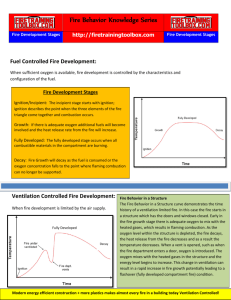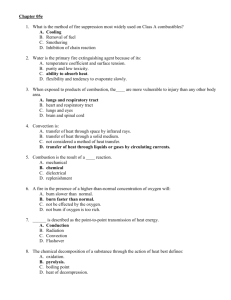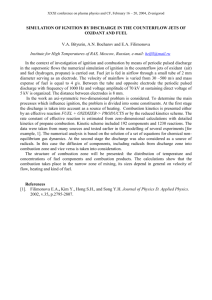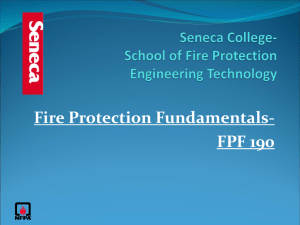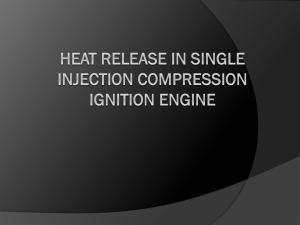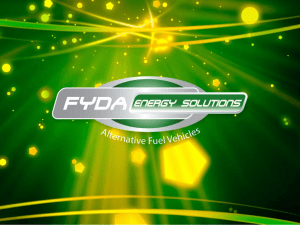6. Combustion and Flame - Suresh Dod
advertisement
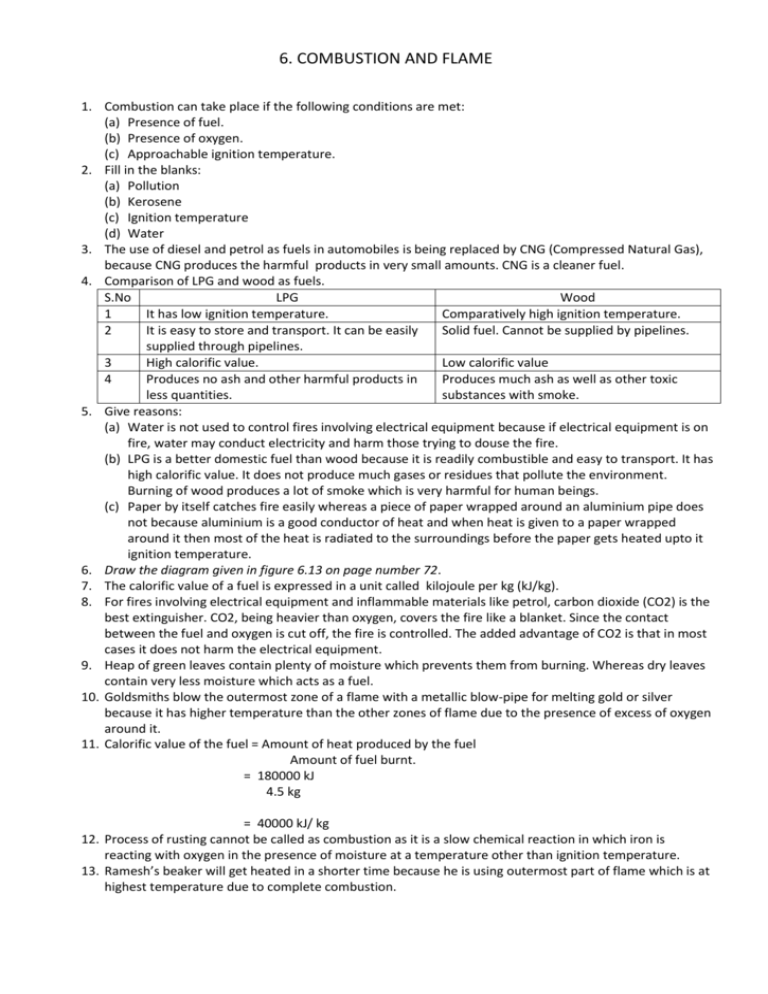
6. COMBUSTION AND FLAME 1. Combustion can take place if the following conditions are met: (a) Presence of fuel. (b) Presence of oxygen. (c) Approachable ignition temperature. 2. Fill in the blanks: (a) Pollution (b) Kerosene (c) Ignition temperature (d) Water 3. The use of diesel and petrol as fuels in automobiles is being replaced by CNG (Compressed Natural Gas), because CNG produces the harmful products in very small amounts. CNG is a cleaner fuel. 4. Comparison of LPG and wood as fuels. S.No LPG Wood 1 It has low ignition temperature. Comparatively high ignition temperature. 2 It is easy to store and transport. It can be easily Solid fuel. Cannot be supplied by pipelines. supplied through pipelines. 3 High calorific value. Low calorific value 4 Produces no ash and other harmful products in Produces much ash as well as other toxic less quantities. substances with smoke. 5. Give reasons: (a) Water is not used to control fires involving electrical equipment because if electrical equipment is on fire, water may conduct electricity and harm those trying to douse the fire. (b) LPG is a better domestic fuel than wood because it is readily combustible and easy to transport. It has high calorific value. It does not produce much gases or residues that pollute the environment. Burning of wood produces a lot of smoke which is very harmful for human beings. (c) Paper by itself catches fire easily whereas a piece of paper wrapped around an aluminium pipe does not because aluminium is a good conductor of heat and when heat is given to a paper wrapped around it then most of the heat is radiated to the surroundings before the paper gets heated upto it ignition temperature. 6. Draw the diagram given in figure 6.13 on page number 72. 7. The calorific value of a fuel is expressed in a unit called kilojoule per kg (kJ/kg). 8. For fires involving electrical equipment and inflammable materials like petrol, carbon dioxide (CO2) is the best extinguisher. CO2, being heavier than oxygen, covers the fire like a blanket. Since the contact between the fuel and oxygen is cut off, the fire is controlled. The added advantage of CO2 is that in most cases it does not harm the electrical equipment. 9. Heap of green leaves contain plenty of moisture which prevents them from burning. Whereas dry leaves contain very less moisture which acts as a fuel. 10. Goldsmiths blow the outermost zone of a flame with a metallic blow-pipe for melting gold or silver because it has higher temperature than the other zones of flame due to the presence of excess of oxygen around it. 11. Calorific value of the fuel = Amount of heat produced by the fuel Amount of fuel burnt. = 180000 kJ 4.5 kg = 40000 kJ/ kg 12. Process of rusting cannot be called as combustion as it is a slow chemical reaction in which iron is reacting with oxygen in the presence of moisture at a temperature other than ignition temperature. 13. Ramesh’s beaker will get heated in a shorter time because he is using outermost part of flame which is at highest temperature due to complete combustion.



